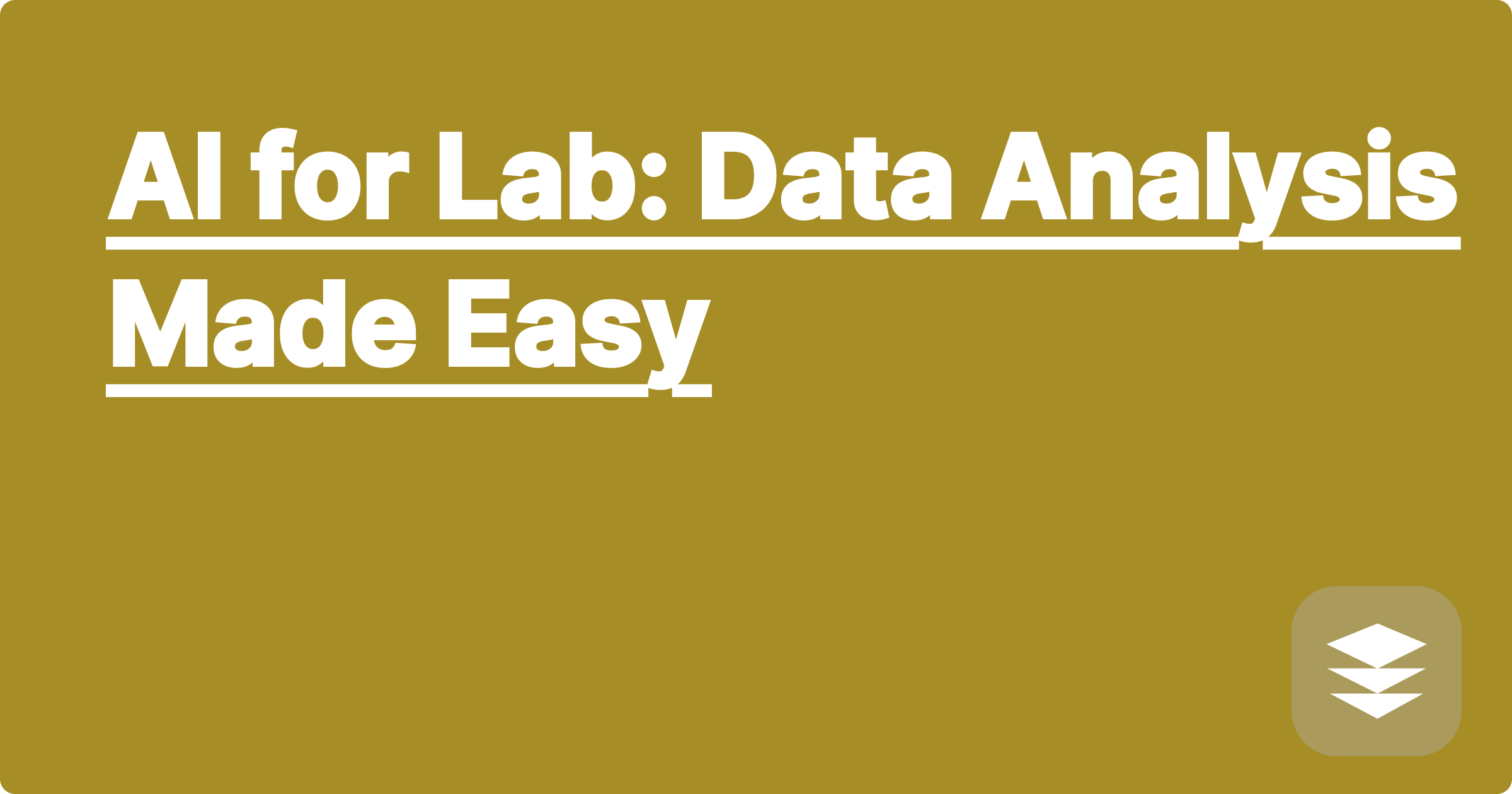
The sheer volume of data generated in modern STEM research presents a significant challenge. Analyzing this data efficiently and extracting meaningful insights can be time-consuming and complex, often requiring specialized programming skills and statistical expertise. Artificial intelligence (AI) offers a transformative solution, providing powerful tools that can automate data processing, identify patterns, and generate valuable insights, ultimately accelerating scientific discovery. AI can handle diverse data types, from genomic sequences to material properties, empowering researchers to focus on interpretation and hypothesis generation rather than tedious manual analysis.
This shift towards AI-powered data analysis has profound implications for STEM students and researchers. Mastering these tools is becoming increasingly crucial for success in academia and industry. By leveraging AI, students can gain a competitive edge, developing valuable skills in data manipulation, visualization, and interpretation. Researchers can accelerate their projects, explore more complex datasets, and ultimately contribute more effectively to their respective fields. Embracing AI in the lab is no longer a luxury but a necessity for staying at the forefront of scientific advancement.
The traditional approach to data analysis in STEM often involves manual data cleaning, transformation, and statistical analysis using software like Excel or specialized statistical packages. This process can be incredibly time-consuming, especially with large datasets. Researchers often spend significant time writing custom scripts for data manipulation, debugging code, and validating results. Furthermore, traditional methods may struggle to identify complex patterns and relationships within high-dimensional data, limiting the depth of analysis. The lack of automation also increases the risk of human error, potentially compromising the reliability of research findings. As datasets continue to grow in size and complexity, the limitations of traditional data analysis methods become increasingly apparent, highlighting the need for more efficient and powerful tools.
AI offers a range of tools that can streamline and enhance data analysis in STEM. Language models like ChatGPT and Claude can assist with tasks such as data cleaning, code generation, and literature review. For example, researchers can use these tools to generate Python scripts for data preprocessing or to summarize relevant research papers related to their area of study. Wolfram Alpha, a computational knowledge engine, excels at symbolic computation, data visualization, and providing access to curated datasets. It can be used to perform complex calculations, generate interactive plots, and explore existing data related to a specific scientific domain. By integrating these AI tools into their workflow, researchers can significantly reduce the time spent on tedious tasks and focus on higher-level analysis and interpretation.
Begin by clearly defining your research question and identifying the relevant dataset. This initial step is crucial for ensuring that the subsequent analysis is focused and meaningful. Next, choose the appropriate AI tool based on the specific task. For data cleaning and code generation, ChatGPT or Claude can be highly effective. If symbolic computation or access to curated datasets is required, Wolfram Alpha might be a better choice. Once the tool is selected, prepare the data in a format suitable for the chosen AI. This might involve converting file formats, cleaning up missing values, or structuring the data according to the tool's requirements. Then, interact with the AI tool, providing clear instructions and specifying the desired output. For instance, you might ask ChatGPT to generate a Python script for calculating the mean and standard deviation of a specific column in your dataset. Finally, carefully review and validate the output generated by the AI. It's crucial to ensure that the results are accurate and consistent with your expectations.
Consider a researcher studying the relationship between gene expression and disease progression. They have a large dataset containing gene expression levels for thousands of genes across multiple patients. Using ChatGPT, the researcher can generate a Python script to normalize the gene expression data and perform a principal component analysis (PCA) to identify patterns in the data. The script might include code like from sklearn.decomposition import PCA; pca = PCA(n_components=2); principalComponents = pca.fit_transform(normalized_data). This automated approach saves the researcher significant time and effort compared to manual implementation. Another example involves a materials scientist exploring the properties of different alloys. They can use Wolfram Alpha to calculate the theoretical melting point of a specific alloy composition using thermodynamic data and equations like the Gibbs-Helmholtz equation: ΔG = ΔH - TΔS. This allows them to quickly assess the feasibility of different alloy designs without conducting time-consuming experiments.
Effectively integrating AI into STEM education and research requires a strategic approach. Develop a strong understanding of the capabilities and limitations of different AI tools. This will allow you to choose the most appropriate tool for each specific task. Practice formulating clear and concise prompts for AI models to ensure accurate and relevant output. Critically evaluate the results generated by AI and validate them using independent methods. Don't blindly accept AI-generated results without careful scrutiny. Stay updated on the latest advancements in AI and explore new tools and techniques as they emerge. The field of AI is constantly evolving, and continuous learning is essential for staying at the forefront. Finally, collaborate with other researchers and share best practices for using AI in STEM. By fostering a culture of collaboration and knowledge sharing, we can accelerate the adoption and effective use of AI in scientific discovery.
To conclude, AI is revolutionizing data analysis in STEM, offering powerful tools that can significantly enhance efficiency and accelerate scientific discovery. By embracing these tools, STEM students and researchers can gain a competitive edge, unlock new insights from complex datasets, and contribute more effectively to their respective fields. The next step is to actively explore the available AI tools, experiment with different applications, and integrate them into your research workflow. The future of STEM research is inextricably linked with AI, and those who embrace this transformative technology will be best positioned to lead the way.
Ace STEM Exams: AI Study Planner
AI for Lab: Data Analysis Made Easy
Master STEM: AI-Powered Flashcards
Coding Help: AI Debugging Assistant
AI in Engineering: Simulation Power
Exam Prep: AI Practice Questions
Math Solver AI: Get Unstuck Now!